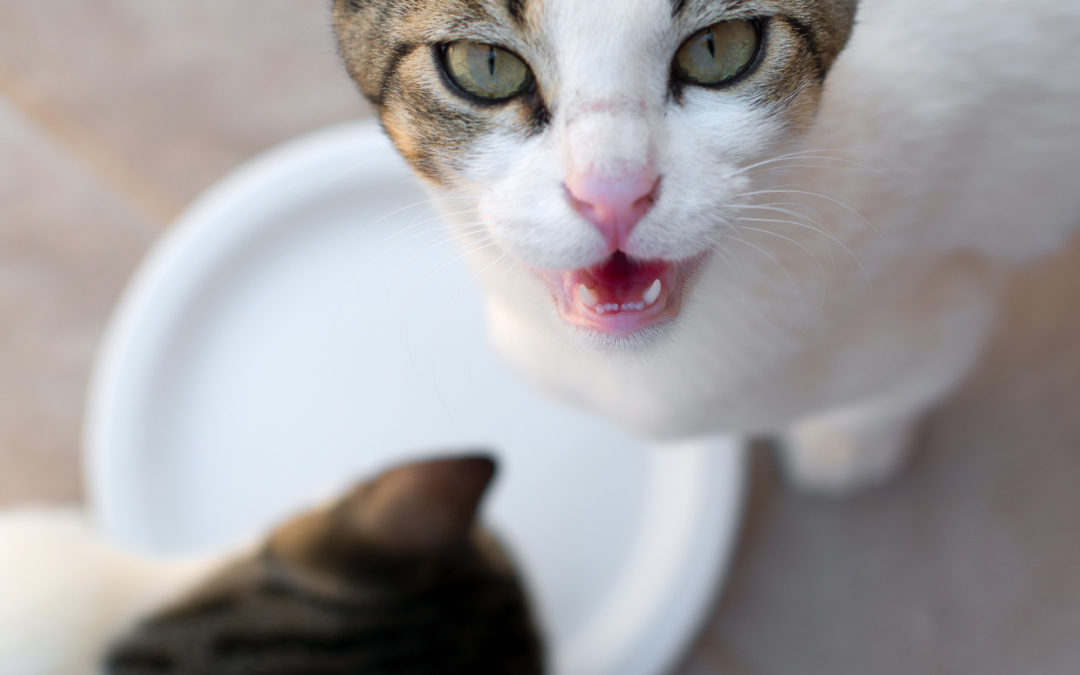
by Admin 2 | May 23, 2016 | Dog Health
Catherine Azar is owner and operator of Windhorse Advanced Healing
My first Rhodesian Ridgeback, Lily, was my heart dog, even before I knew what a heart dog was. She had a rough start in life, orphaned at 3 weeks. Whether it was that, or just her lot in life, or her karma, she had health challenges throughout her life. One of those challenges was seasonal allergies, and she was pretty much miserable from Spring until the first frost, with a little let-up to the itching during the mid-summer months. I tried everything for her, from over-the-counter (Benedryl) to prescribed medications, topical applications, herbs, you name it. Things helped, but nothing really took care of the root problem, and she was often miserable.
One summer I was working at a horse show in Albuquerque, doing bodywork on my client’s horses there. I ran into a colleague, who was working with a device called the Bicom, a bioresonance system, like a biofeedback machine that worked with physical issues in the body. Unbeknownst to me at the time, the Bicom is best known around the world for its success with allergies. I asked if we could treat Lily for her allergies, and my friend said to bring her to the stall where she was working, and we would treat her. I could see that she enjoyed the session, relaxing and allowing the programs to run. After, I saw a marked improvement in her symptoms, and I was so impressed that I vowed to not only pursue finding someone in my area to work with, but I made a commitment to myself that I was going to purchase this device and add it to my offerings as an animal bodyworker. I actually was able to find a veterinarian using the Bicom technology in Boulder, who has since retired. After I took Lily to her, she experienced so much relief that she literally had the best summer of her life. My commitment grew, and I knew that I had to have this device to use in order to deepen my work and my life.
Long story short, I got my own Bicom optima device, an upgraded version of the original machine, and have now been offering sessions for over two years across the country. I have seen results, sometimes miraculous, for allergies (chronic and acute), food sensitivities, intestinal issues including ulcers and colitis, Cushings disease, Chronic Lyme Disease, orthopedic issues, pain and inflammation, Candida, vaccinosis (vaccine damage), and the list goes on. Daily, I see how I have been blessed to do this healing work in the world of companion animals, as well as canine and equine athletes, and I so look forward to being able to reach more and more of those who seek to move toward greater health for their four legged friends.
Keep an eye out for Catherine at upcoming Struttin Pup events where you can ask her questions – and of course you can contact her directly as well. Phone is 303-818-2867, Email is ccazar@earthlink.net. and Website www.windhorseadvancedhealing.com.
Catherine Azar, formerly of Windhorse Therapies, has worked as a bodyworker with animals for nearly 20 years. Her work has taken her from coast to coast, working with high level competitive Hunter/Jumper, Dressage, and Three Day Event horses. For the past several years, her focus has shifted toward canine companions and athletes. With this shift, and a change of name to Windhorse Advanced Healing, Catherine offers Bicom optima and Class IV laser treatments to your four legged family members and athletes .

by Admin 2 | May 3, 2016 | Cat Health
Good, Better, Best – Without Judgement
Oh, so many years ago, after I had just gotten my first dog, Reed, I went to an independent pet store to purchase food. “I’m looking for Pro Plan. It’s what the breeder feeds”, I said to the owner, when asked what I was looking for. Then she climbed on her soapbox and proceeded to tell me how I was poisoning my dog and what she sold was infinitely better. It took me 3 months to get over my guilt and embarrassment before I went back to that store and purchased a natural food for Reed.
At Struttin Pup, we strive to help you – wherever you are in the current moment – without judgment. Everyone is at a different point in their own personal health journey and that of their animal. Regardless of whether time, money, or convenience are your main concerns regarding what you feed your pet, quality is always going to be foremost at Struttin Pup.
Let’s focus, for now, on what to feed your cat, depending on where you are in your journey. I’ll explain what your cat should be eating and why, and then we’ll examine the different means to get the best for your cat, whether it’s dry, canned, dehydrated or raw.
- Cats are obligate carnivores.
- Cats don’t produce salivary amylase to break down starches. Simply put, they don’t produce the enzymes required to digest carbohydrates.
- Take a look at your cat’s teeth, they’re pointed and sharp and are designed to bite, tear and chew raw meat. With the exception of their back molars, which provide a very limited ability to masticate food, their teeth are not designed to chew grains.
- A cat’s natural diet contains less than 2% carbohydrate. Dry foods, even grain-free, contain between 20 to 40% carbohydrate. Excess carbohydrates can lead to obesity and diabetes in your cat.
- A cat’s natural diet contains between 65 to 75% moisture. Dry cat food, for example, only provides up to 10% moisture. A diet lacking in moisture can cause chronic dehydration, leading to urinary tract problems. And sadly, due to their low thirst drive, your cat won’t just drink more water.
- Cats need 2 to 3 times more protein than dogs, roughly 52%. Dry cat food typically contain only 30 to 35% protein
Now that you have the basics, you can see why dry kibble is not our first choice for your cat. With that said, sometimes that’s just where you are on your journey, and that’s ok! We’ll start you and your cat on your journey with a natural, grain-free kibble that is high in protein, contains no by-products, corn, soy or fillers.
Next up…canned cat food. Canned food is higher in protein, lower in carbohydrates and has a higher moisture content, compared to dry food, making it the next best choice in your decision of what to feed your cat. Because canned food is more easily digested and utilized by your cat, a bonus is less solid waste in the litter box!
Dehydrated raw food, like The Honest Kitchen, is a great option for those who want to feed a raw, but aren’t comfortable with raw. It’s also the perfect way to transition your cat from dry to raw food and is great for cats recovering from a GI problem or pancreatitis. Dehydrated cat food is dry, but only until you add water. Then it provides a biologically appropriate 70% moisture to your cat’s diet. Dehydrated food hasn’t been processed at high temperatures, leaving the majority of its nutrient values intact.
As for the creme de la creme, it would be raw cat food. Feeding raw cat food has so many benefits:
- Better urinary health
- Increased vitality
- Healthy coat, fewer hairballs and less shedding
- Better dental health
- Improved digestion
- Natural weight control
- Less stool volume and odor
By feeding a raw food diet to your cat, your cat is getting just what it needs, biologically speaking. And with the convenience of frozen raw food, like Rad Cat, it’s so easy to provide, just thaw and serve!
Just know that you’re on the right track. You took the time to read this blog which means you’re interested in making the best decision for you and your cat, wherever you are in your journey. We’re here to give you the information you need to make the best decision you can, based on your current situation. No judgment – honestly.





